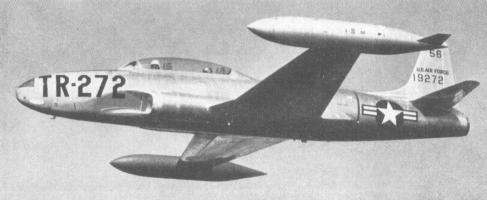| The Lost Lockheed T-33 | |
|---|---|
| David Steeves 1957 | |
 | |
| The Lockheed T-33A Shooting Star Two-Seat Trainer. | |
| The Lost Lockheed T-33 | |
|---|---|
| David Steeves 1957 | |
 | |
| The Lockheed T-33A Shooting Star Two-Seat Trainer. | |
Forty years ago a young Air Force pilot disappeared on a routine mission in the West. 54 days later 1st Lt. David Steeves, long declared dead, emerged from the snowy Sierra Nevada with two sprained ankles, a full beard and a survival tale featuring pluck and a canned ham.
His tumultuous homecoming turned to suspicion when his T-33 training jet could not be found, giving rise to rumors that hounded him for the rest of his life and were dispelled only after his death.
On May 9 1957, a 23-year-old pilot took off alone from Hamilton Air Force Base near San Francisco, headed to Craig Air Force Base near Selma, Ala., when he disappeared.
Rescue missions found nothing. The Air Force declared Steeves legally dead, and mailed a certificate saying so to his mother in Trumbull, Conn. But 54 days after the crash he came out of the Sierra Nevada alive.
Steeves told reporters "something blew up" in the cockpit shortly after he took off and he parachuted over California's rugged southern Sierra. He didn't eat for two weeks, then found a ranger's cabin in Kings Canyon National Park where he found fish hooks, beans and a canned ham.
Weeks later, after wandering more than 20 miles, he stumbled upon some campers and told them who be was. He was treated like a hero. But when his T-33 could not be found, the cheering died.
Rumor and innuendo found its way to Steeves. One scenario had him selling the jet to Russia, and another shipping it piecemeal to Mexico. It was the late 1950s and a time when Americans were told to keep an eye out for Communists and attempts to infiltrate the nation.
The Saturday Evening Post reneged on a $10,000 story offer after its writer said he found discrepancies in Steeves' story, although they weren't explained at the time. Steeves' young wife left him, taking their toddler daughter.
The Air Force investigated. Although the inquiry never led to charges, it ruined Steeves' career. He was granted his request to return to civilian life.
He found work as a commercial pilot and designing parachute planes, but he spent years searching for his jet, renting planes and scouring the countryside.
In 1965, he died in a plane crash while demonstrating one of his new designs.
It wasn't until 12 years later, in 1977, that the mystery was solved. Some Boy Scouts hiking through Kings Canyon National Parlc came across a cockpit cover in the mountains. There was a serial number on the piece, and it matched Steeves' missing T-33.